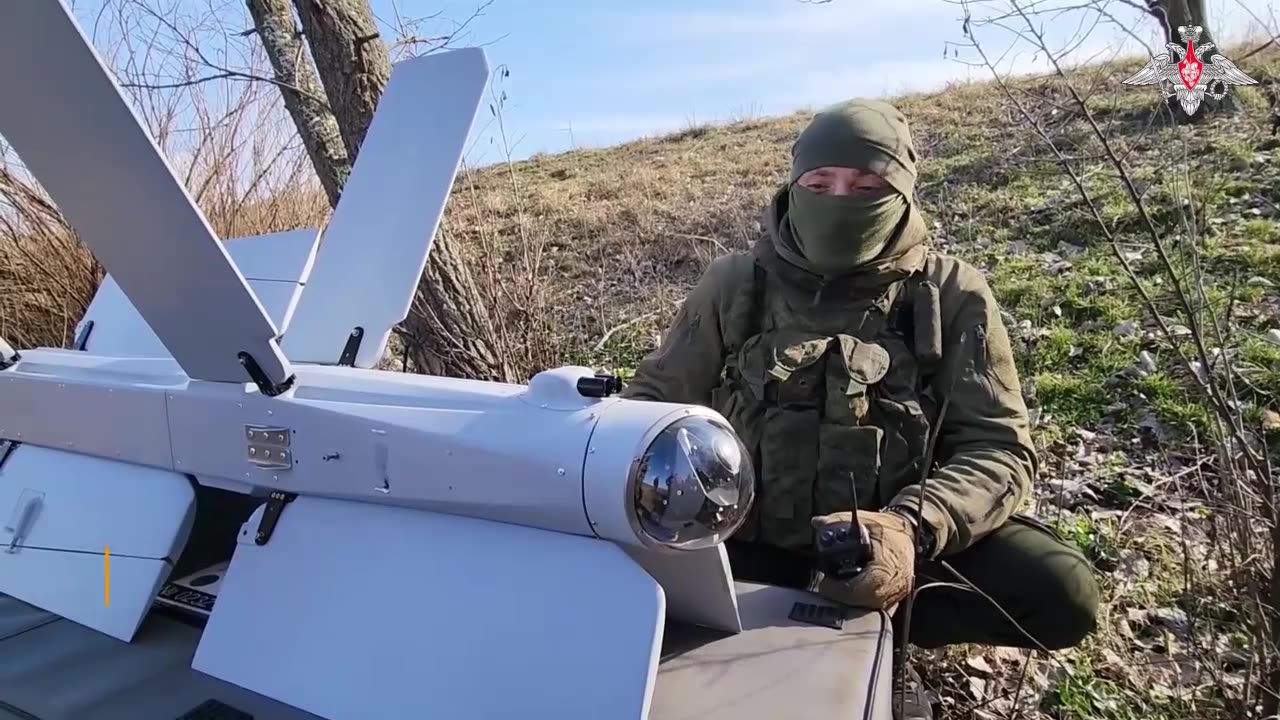Premium Only Content

Enemy drone from launch to striking a target: ZALA Lancet is a Russian kamikaze drone
This is the only Russian drone that is worth covering, it does create a lot of headache ok n the battlefield in Ukraine. Lancet ( Лацент) managed to successfully destroy several artillery systems . This drone first showed up in action around 2019-2020 in Syria . On a positive note, Russians don't produce this drone in masses ; therefore, it only strikes hight priority targets . At the beginning of war , this kamikaze drones were not very accurate, but as of lately accuracy definitely improved. I don't know if accuracy improved from them tweaking and upgrading a drone , or maybe drone operators improved their skills with more combat experience. If I am to compare Switchblade 300 to this drone, than Lacent definitely outperforms Switchblade 300 . switchblade 300 drones drones lack the " killing power" sort of speak
The ZALA Lancet is a Russian loitering munition or suicide drone. It was designed by the ZALA Aero Group which is part of the Kalashnikov Group. The Lancet is a successor to an earlier flying-wing style loitering ammunition developed by ZALA called the Kub (cube). It was first unveiled in June 2019 and saw action shortly after during the Syrian Civil War. Russians used these drones at Idlib in 2020-2021. It was widely used in Ukraine, where this drone recommended itself extremely well.
The main roles of the Lancet are reconnaissance and attack missions. During the initial part of the flight the drone can be directed with GPS coordinates or visually. During the terminal part, when it is approaching its target, the drone is controlled manually via electro-optical guidance and a TV guidance unit. This allows to adjust trajectory and guide the drone to its target in real time. The drone includes intelligence, navigation and communication modules.
The Lancet has a rather unusual shape. Two pairs of X-shaped wings are installed at the front and rear of the fuselage. It’s powered by an electric motor that drives a two-bladed propeller located at the rear. The standard version has a maximum range of 40 km and an endurance of around 40 minutes. The weight is only 12 kg thanks to the use of plastic and composite materials in its structure. Such suicide drones are capable of hovering in the air and swooping down on the target at a speed of up to 300 km/h to hit it on its most vulnerable part.
This loitering munition is launched with a catapult that can be installed on the ground and also on a boat. In October 2021 the Russian Navy announced that it would equip its ships with the Lancet loitering munitions. This addition increases the strike capacity of Russian ships and requires almost no technical modifications to their vessels.
The ZALA Aero Group has developed two version of the drone the Lancet-1 and the Lancet-3. The Lancet-1 is a lightweight version intended for reconnaissance missions, while the Lancet-3 is a standard version capable of carrying a payload of 3 kg. Later reportedly an improved model emerged with a 5 kg warhead.
The drone was used for the first time by Russian special forces in Syria. These drones were reportedly launched these drones from small high-speed boats. Apparently, several dozen precise attacks were made with the help of Lancet. In Syria Russians were not only testing this suicide done, but also developed tactics and rules for its general use.
-
 3:39
3:39
Ukraine Combat Footage
15 days agoUkraine Combat Footage : Russians refused to surrender
2.21K3 -
 UPCOMING
UPCOMING
Michael Franzese
10 hours agoMenendez Brothers Denied Parole – Newsom Holds Their Fate
16.9K3 -
 40:42
40:42
SouthernbelleReacts
1 day ago😂 American Pie (1999) Reaction | Iconic Teen Comedy, High School Chaos & 90s Nostalgia 🥧
361 -
 24:06
24:06
True Crime | Unsolved Cases | Mysterious Stories
5 days ago $0.11 earnedShe Traveled Alone… and Never Came Back – 5 Mysterious Unsolved Cases (Part 6)
1271 -
 27:23
27:23
Clickbait Wasteland
13 hours agoAsking New Yorkers Who They Support For Mayor: Staten Island
491 -
 16:58
16:58
World2Briggs
21 hours agoThe California Rant: Point Blank With No Fluff or BS. California Gold?
198 -
 17:49
17:49
Chris Harden
1 day ago $0.01 earnedThe Glass Capital That Shattered | The Decline of Streator, Illinois
8 -
 51:15
51:15
JohnXSantos
3 days agoClothing Brand Manufacturers + Winners
191 -
 10:06
10:06
Cyclops Videos Joe W Rhea
12 days agoHybrid Super 22 Rifle
67 -
 8:30
8:30
Millionaire Mentor
20 hours agoMaria Bartiromo Plays Clip That DESTROYS Adam Schiff’s Entire Story
85